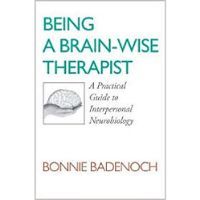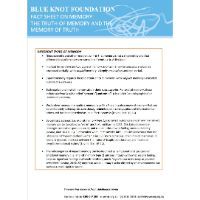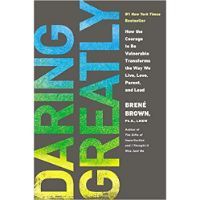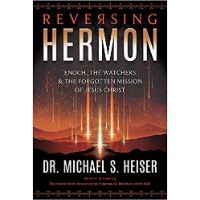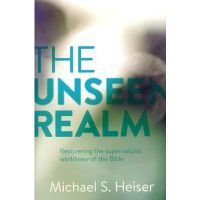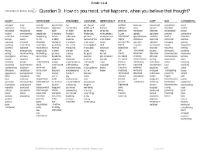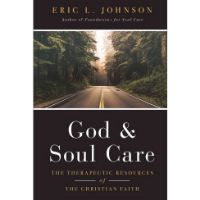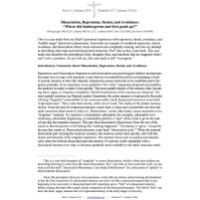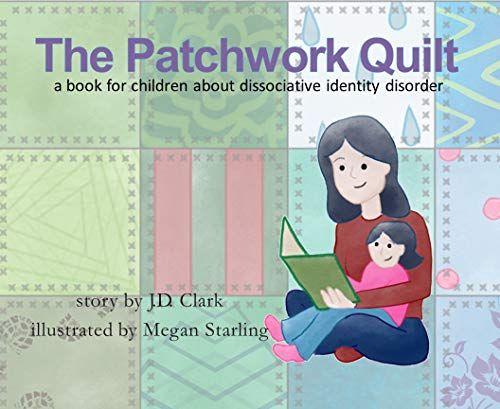Discovering MErcy recommends several helpful PDFs, books, podcasts and videos to help explain both the mental/emotional and spiritual aspects to healing and imaging one's self to God. Here are a collection of some of our favorites. If you have additional suggestions for this area, or materials that have helped you, let us know! Each title will either refer you where to purchase the book or pull up the PDF of the reading.
*In any resources listed, Discovering MErcy does not agree with, use or participate with the techniques of hypnosis or guided imagery.*
Reading List
-
In easy-to-understand prose, Being a Brain-Wise Therapist reviews the basic principles about brain structure, function, and development, and explains the neurobiological correlates of some familiar diagnostic categories. You will learn how to make theory come to life in the midst of clinical work, so that the principles of interpersonal neurobiology can be applied to a range of patients and issues, such as couples, teens, and children, and those dealing with depression, anxiety, and other disorders. Liberal use of exercises and case histories enliven the material and make this an essential guide for seamlessly integrating the latest neuroscientific research into your therapeutic practice.
-
More on the different types of memory, Memory, Brain Development and Processes, Traumatic Memory, Remember by Reliving: Trauma, Repetition and Behavioral Reenactment, Remembering and ‘Forgetting’, Recovered Memory (Delayed Onset Memory Recall), ‘Betrayal Blindness’, The Dynamics of Disclosure, The reliability of Memory and the Role of Social Context
-
17 Facts for people who have experienced childhood trauma (and abuse)
-
Researcher and thought leader Dr. Brené Brown offers a powerful new vision that encourages us to dare greatly: to embrace vulnerability and imperfection, to live wholeheartedly, and to courageously engage in our lives.
-
Healing the Fragmented Selves of Trauma Survivors integrates a neurobiologically informed understanding of trauma, dissociation, and attachment with a practical approach to treatment, all communicated in straightforward language accessible to both client and therapist. Readers will be exposed to a model that emphasizes "resolution"―a transformation in the relationship to one’s self, replacing shame, self-loathing, and assumptions of guilt with compassionate acceptance.
Its unique interventions have been adapted from a number of cutting-edge therapeutic approaches, including Sensorimotor Psychotherapy, Internal Family Systems, mindfulness-based therapies, and clinical hypnosis. Readers will close the pages of Healing the Fragmented Selves of Trauma Survivors with a solid grasp of therapeutic approaches to traumatic attachment, working with undiagnosed dissociative symptoms and disorders, integrating "right brain-to-right brain" treatment methods, and much more. Most of all, they will come away with tools for helping clients create an internal sense of safety and compassionate connection to even their most dis-owned selves.
-
How the writings of Peter and Paul allude to the sin of the Watchers and present Jesus as overturning the disastrous effects of their sins against humanity. How the descriptions of the antichrist, the end-times Day of the Lord, and the final judgment connect to Genesis 6 and the nephilim. Though every topic addressed in Reversing Hermon can be found in scholarly academic literature, Reversing Hermon is the first book to gather this information and make it accessible to Bible students everywhere. The book also includes lengthy appendices on the ancient debate on the inspiration of the book of 1 Enoch, New Testament allusions to the book, and academic resources for studying 1 Enoch and the Book of Giants from the Dead Sea Scrolls.
-
In The Unseen Realm, Dr. Michael Heiser examines the ancient context of Scripture, explaining how its supernatural worldview can help us grow in our understanding of God. He illuminates intriguing and amazing passages of the Bible that have been hiding in plain sight. You'll find yourself engaged in an enthusiastic pursuit of the truth, resulting in a new appreciation for God's Word.
-Why wasn't Eve surprised when the serpent spoke to her?
-How did descendants of the Nephilim survive the flood?
-Why did Jacob fuse Yahweh and his Angel together in his prayer?
-Who are the assembly of divine beings that God presides over?
-In what way do those beings participate in God's decisions?
-Why do Peter and Jude promote belief in imprisoned spirits?
-Why does Paul describe evil spirits in terms of geographical rulership?
-Who are the “glorious ones” that even angels dare not rebuke?After reading this book, you may never read your Bible the same way again.
-
A worksheet to help you discover how you react, what happens when you believe a thought and who would you be without the thought?
-
In God and Soul Care―a companion to Foundations for Soul Care―Eric L. Johnson explores the riches of Christian theology, from the heights of the Trinity to the mysteries of eschatology. Each chapter not only serves as an overview of a key doctrine, but also highlights the therapeutic implications of this doctrine for Christian counseling and psychology. A groundbreaking achievement in the synthesis of theology and psychology, God and Soul Care is an indispensable resource for students, scholars, pastors, and clinicians.
-
This is a case study from my (Karl’s) personal experience with repression, denial, avoidance, and "middle range” dissociative phenomena. It provides an example of combined repression, denial, avoidance, and dissociation where visual memories are completely missing, and also my attempt at describing what repressed and dissociated memories "feel” like as they come back. This case study also describes the perceptions (lies), thoughts (lies), and emotions that are triggered when I can’t solve a problem. As you will see, this case study is still “in progress.”
(© Copyright 2002 K.D. Lehman MD & C.E.T. Lehman MDiv, New 3/23/2002, Revised 4/19/2006)
-
"For the word of God is living, and active, and sharper than any two-edged sword, and piercing even to the dividing of soul and spirit, of both joints and marrow, and quick to discover the thoughts and intents of the heart" (Heb. 4:12). The peril of the believer is to confuse the spirit for the soul and the soul for the spirit, and so be deceived into accepting the counterfeit of evil spirits to the unsettling of God's work.
The greatest advantage in knowing the difference between spirit and soul is perceiving the latent power of the soul and in understanding its falsification of the power of the Holy Spirit. Such knowledge is not theoretical but practical in helping people to walk in God's way.
In this book, Watchman Nee shares his insight on The Latent Power of The Soul, The Christian and Psychic Force, and Spirit Force vs Psychic Force. Nowadays the atmosphere is so charged with the commotion of all kinds of counterfeit that the Lord seems to be calling the Church to come to a higher ground. Today's situation is perilous. May we "prove all things; hold fast that which is good" (1Thes. 5:21)
-
The Great Behavior Breakdown identifies 27 of the most problematic, serious, and challenging behaviors that parents face, broken them down, and provided step-by-step guidance and insight for transforming your family conflict immediately. This is a must-read book for any parent or professional working with children who have seemingly uncontrollable behavior. Common diagnoses for such children are Reactive Attachment Disorder, Oppositional Defiant Disorder, Bi-Polar Disorder, Conduct Disorder, Attention Deficit Hyperactivity Disorder, Depressive Disorder, and Autism Spectrum Disorder. This book, a follow-up to the groundbreaking audio program of the same title, is guaranteed to change the way you view these behaviors.
-
Conversations about mental health can be difficult. The Patchwork Quilt is a picture book designed to help those with D.I.D. - Dissociative Identity Disorder (previously known as multiple personality disorder) talk about the condition. It is a great starting point for explaining this complex psychological condition to children (or to young alters).
This colorfully illustrated narrative story introduces DID to children in a serious, but whimsical way. The Patchwork Quilt addresses;*DID’s formation out of trauma
*The concept of parts (or alters)
*Emotional issues such as; anger, fear, depression, self-worth
*The positive outcome of internal communication & cooperationDissociative identity disorder is a complex condition and by its nature highly personal. This story is meant to be open to interpretation. Some people are working towards integration; others are working towards being a functional system. This book is not a judgement on or endorsement of any method of healing. It was written to be a starting point for open discussion of DID with children.
-
Dissociative identity disorder (DID, formerly known as multiple personality disorder), is a fascinating disorder. The movie industry and Hollywood are enthralled with it, with the recent psychological thriller, Split, raising many questions about DID.
-
Interest in dissociation, as a mental ability and as a set of symptoms secondary to trauma, has re-vitalized in the past ten years following a one hundred year hiatus between
the work of Janet and the work of the pioneers in the field of trauma in the 1980s and 90s (van der Kolk, 1997; Putnam, 1999; Chu, 1998). Although we have a better
understanding of dissociation now than we did ten years ago, it is still a very controversial subject in the field of mental health because it is so routinely equated with Dissociative Identity Disorder. As a result, even experienced clinicians miss the frequent more subtle presentations that appear in our offices on a daily basis. If we look instead to understand dissociation as we would any other mental state phenomenon, we will begin to see that all human beings dissociate, and much of our dissociativeness is adaptive. -
A document published on the 12th of October, 2014 entitled “Opinion Regarding the Scientific Standing of Repressed and Reconstructed Memories,” signed by forty-seven prominent academics, has been widely circulated in the press as support for barring recovered memories of childhood abuse as evidence admissible in Israeli courts.
-
Children who are traumatized are at risk for developing complications with attachment.
-
The Childhood Adversity Narratives CAN's goal is to show that there are proven interventions and opportunities to change these personally tragic and socially costly outcomes. The purpose is to help inform policy makers and the public about the costs and consequences of child maltreatment and adversity.
-
Towards a rational diagnosis for children with complex trauma histories
Discover videos with sound Biblical theology and teaching or with sound research on courage, vulnerability or shame.
BOOKS AND OTHER MEDIA THAT MAY INTEREST YOU
(source: Beauty after Bruises Web site)
Growing Beyond Survival - A Self-Help Toolkit for Managing Traumatic Stress
A Workbook | Elizabeth Vermilyea
The Body Keeps the Score | Bessel van der Kolk
The Haunted Self: Structural Dissociation and the Treatment of Chronic Traumatization | Onno van der Hart, Ellert R. S. Nijenhuis and Kathy Steele
Coping with Trauma-Related Dissociation: Skills Training for Patients and Therapists
A Workbook | Suzette Boon, Kathy Steele, Onno van der Hart
Amongst Ourselves - A Self-Help Guide to Living with Dissociative Identity Disorder
A Workbook | Tracy Alderman and Karen Marshall (An older publication, but still very valuable content)
A Coloring Book of Healing Images for Adult Survivors of Child Abuse
A Spiral-bound Adult Coloring Book and Workbook | Dr. Ellen Lacter
Dear Little Ones: A Book about Dissociative Identity Disorder for Young Alters
An Illustrated 'Children's Book' | Jade Miller (You can also listen to her reading of it, and seeing the pages, hear on YouTube)



